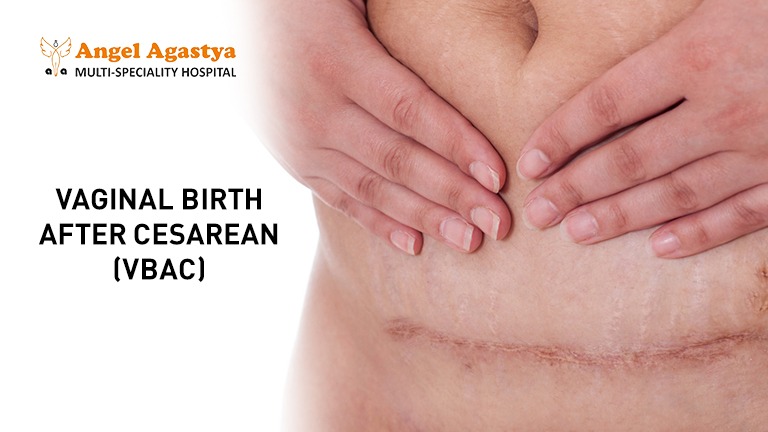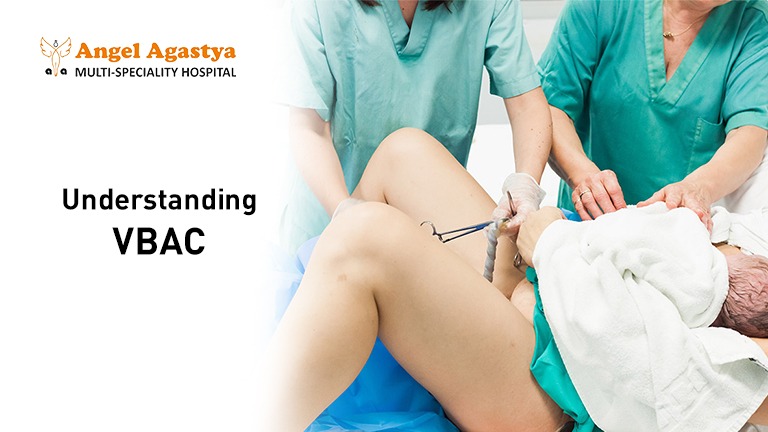Introduction:
Becoming a mother is a beautiful adventure, filled with moments both extraordinary and ordinary, joyful and challenging. For many women, the dream of childbirth can come with a variety of considerations, especially when navigating a previous cesarean section. If you’re exploring the possibility of a vaginal birth after cesarean (VBAC), you’re not alone. This blog aims to empower you with knowledge and resources as you make informed decisions about your motherhood journey.
1. Risks Associated with VBAC
Understanding the potential benefits and risks of VBAC is crucial. While it offers several potential advantages, including a shorter recovery time, reduced risk of surgical complications, and the potential for a more natural birthing experience, it’s important to be aware of factors that might influence your candidacy. These include the reason for your previous cesarean section, the type of incision made, and the overall health of both you and your baby.

2. Understanding VBAC:
VBAC refers to the successful delivery of a baby vaginally after a previous cesarean section. While once uncommon, it is becoming increasingly accepted and supported under appropriate conditions. It’s crucial to remember that every woman’s situation is unique, and making the right choice for you and your baby requires careful consideration of several factors.
However, it’s crucial to remember that every woman’s situation is unique, and the decision to pursue VBAC requires careful consideration of several factors. Consulting with a qualified healthcare professional is vital for discussing your individual circumstances and determining if it is a safe and suitable option for you and your baby. They can provide personalized guidance, address your concerns, and work with you to create a birth plan that aligns with your preferences and priorities.

3. Factors Influencing Your Decision:
Deciding whether to pursue VBAC is a personal choice that requires careful consideration of various factors.
Let’s unpack some key questions to help you decide:
- Medical History: Consulting your healthcare provider is crucial. They will assess your health, including the reason for the previous cesarean section and any potential risks or benefits associated with it in your specific situation.
- Personal Preferences: Embrace your needs and desires. Do you yearn for a natural birth experience? Understanding your preferences and discussing them openly with your doctor is essential.
- Healthcare Team Expertise: Seek support from qualified professionals experienced in supporting VBAC deliveries. Collaboration with a team that understands your goals and prioritizes your safety is vital.

4. The Emotional Journey:
Navigating the possibility of it can evoke a range of emotions. It’s normal to feel excited, hopeful, apprehensive, or even nervous. Acknowledging and addressing these emotions through open communication with your partner, family, and healthcare team can be incredibly helpful. Remember, there’s no shame in seeking support from therapists or joining VBAC-focused online communities.
5. Preparing for VBAC (Optional):
While not everyone chooses to take specific preparatory steps, some individuals find comfort and empowerment in proactive measures.
Here are some options to consider, always in consultation with your healthcare provider:
- Physical Preparation: Explore options like prenatal yoga, targeted exercises, and strengthening routines designed to support a healthy pregnancy and potential VBAC delivery.
- Mental Preparation: Addressing anxieties and building confidence can be crucial. Consider childbirth education classes, relaxation techniques, or therapy (if needed) to prepare for the emotional journey.
- Communication and Planning: Maintain open and honest communication with your healthcare team. Create a birth plan that reflects your preferences while prioritizing safety. Discuss potential scenarios and ensure you feel comfortable with the plan.
6. VBAC Resources and Support:
Remember, you’re not on this journey alone. Numerous resources and support systems are available to empower you:
- Professional Medical Organizations: Seek information from reputable sources like the American College of Obstetricians and Gynecologists (ACOG) for evidence-based guidance on it.
- Support Groups and Online Communities: Connecting with other women who have chosen VBAC can be incredibly valuable. Sharing experiences, offering encouragement, and finding understanding amongst peers can create a supportive network.
- Childbirth Education Classes: Enroll in VBAC-specific classes or workshops designed to provide information, answer questions, and build confidence for your delivery.

7. Benefits of VBAC: A Natural Birth After Cesarean
Many women who’ve delivered via cesarean section (C-section) still hold onto the dream of a vaginal birth after cesarean. It offers a range of potential advantages for both mom and baby.
Here’s why exploring VBAC might be the right path for you:
- Faster Recovery: Compared to a C-section, it typically leads to a quicker and less painful recovery. This allows for earlier bonding with your newborn and a faster return to normalcy.
- Reduced Surgical Risks: Avoiding another major surgery minimizes the risk of infection, blood clots, and other potential complications associated with C-sections.
- More Natural Birth Experience: Many women report feeling empowered and fulfilled by achieving a vaginal birth. It can offer a greater sense of control and participation in the birthing process.
- Lower Risk of Future Issues: Studies suggest that successful VBAC deliveries may reduce the risk of complications in subsequent pregnancies.
While VBAC presents several advantages, it’s crucial to remember that every woman’s situation is unique. Discussing it with your doctor is essential to determine if it’s the safest and most suitable option for you and your baby.
8. Should You Really Go for VBAC? Weighing the Options
The decision to pursue VBAC is personal, and an in-depth discussion with your doctor is key. Here are some key factors to consider:
- Reason for Past C-Section: The success rate of VBAC is generally higher if the previous C-section was performed for non-recurring reasons like breech presentation (baby positioned feet-first).
- Uterine Incision Type: A low transverse C-section incision (horizontal cut) is considered the most favorable for an attempt.
- Overall Health and Pregnancy Health: Your health status and any potential complications during this pregnancy can influence the decision.
While VBAC offers potential benefits, it’s important to understand that it’s not always the right choice. Certain situations, such as a placenta previa diagnosis or a history of multiple C-sections, might make a planned C-section a safer option. Ultimately, the goal is a safe and healthy delivery for both mom and baby. Open communication with your doctor ensures you make an informed decision that aligns with your individual circumstances.
9. Embracing Your Decision:
Regardless of the path you choose, whether VBAC or another delivery method, remember to embrace your decision with confidence. You are the best advocate for yourself and your baby.

10. Summary: Your Empowering Journey
The decision of VBAC is yours to make. Remember, knowledge and communication are your allies. This blog aims to provide a foundation for you to explore the possibilities and make informed choices aligned with your personal health, preferences, and support network. Take your time, gather information, seek professional guidance, and embrace your unique motherhood journey with confidence and empowerment.
11. Key Questions (FAQs):
1. What are the benefits of VBAC compared to C-section?
Potential benefits include faster recovery, decreased risk of certain surgical complications, and the experience of a natural birth (if desired).
2. What are the potential risks associated with VBAC?
While uncommon, risks like uterine rupture can occur. Consulting your doctor for a personalized assessment is crucial.
3. Who is a good candidate for VBAC?
Several factors influence candidacy, including the reason for the previous C-section, the type of incision made, and your overall health. Your healthcare provider will determine your suitability based on your situation.
4. What factors are considered when deciding on VBAC?
Refer to Section 2: “A Balancing Act: Factors Influencing Your Decision” for details.
5. How can I prepare for a VBAC delivery?
Consult your healthcare provider for personalized advice. Some potential options include:
- Physical preparation: Prenatal yoga, targeted exercises, and strengthening routines can enhance strength and flexibility.
- Mental preparation: Childbirth education classes, relaxation techniques, or therapy can address anxieties and build confidence.
- Communication and planning: Open communication with your healthcare team and creating a birth plan are essential.
6. What resources are available for individuals considering VBAC?
Refer to Section 5: “VBAC Resources and Support” for details.
7. Are there any risks to the baby during VBAC?
While rare, potential risks exist in any delivery method. Your healthcare provider will discuss all potential risks and benefits during your consultations.
8. What happens if a VBAC attempt becomes a C-section?
If any concerns arise during labor or delivery that prioritize the safety of you or your baby, your healthcare team may recommend transitioning to a cesarean section. This decision will be made collaboratively based on the specific circumstances.
9. How common is VBAC success?
VBAC success rates vary depending on various factors. It’s crucial to discuss personalized statistics and success rates with your healthcare provider based on your specific situation.
10. What are the emotional considerations for women considering VBAC?
It’s normal to experience a range of emotions. Acknowledging and addressing these emotions through open communication and seeking support are vital.


Is cervix not opening and heart beat of baby become low and no self labour pain till 42 week at home . Induced and 10 hour in labour only is first cesarean reason?first delivery and Can I try for vbac